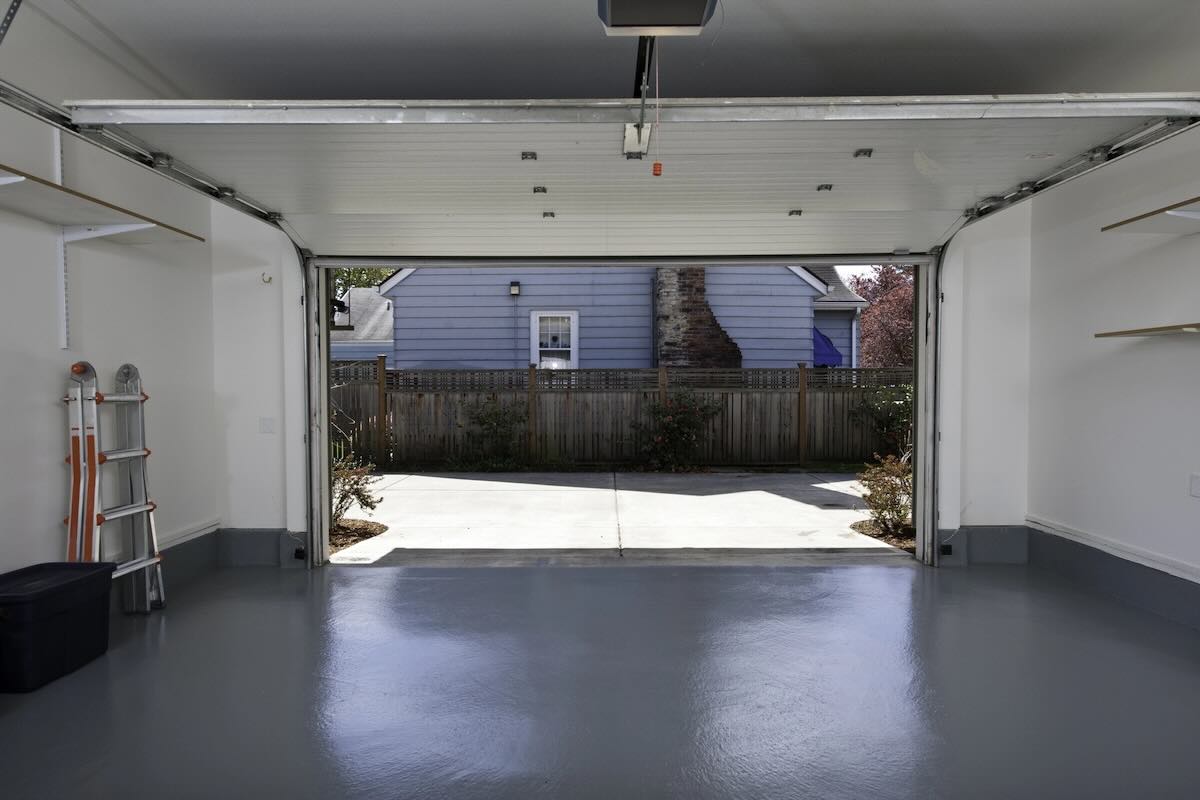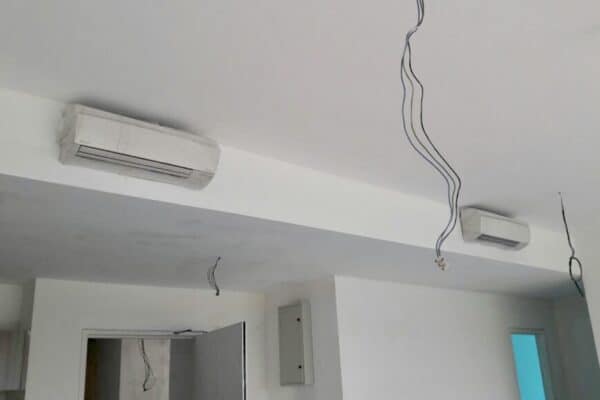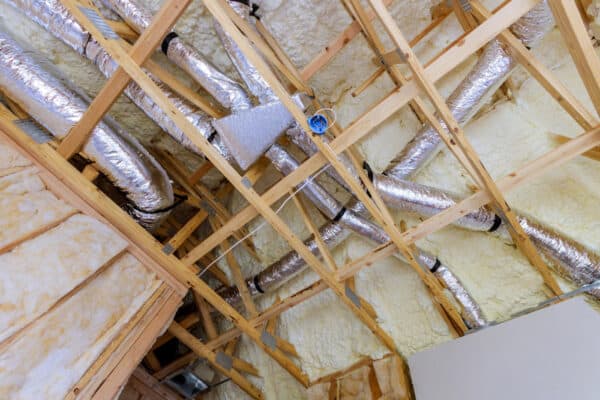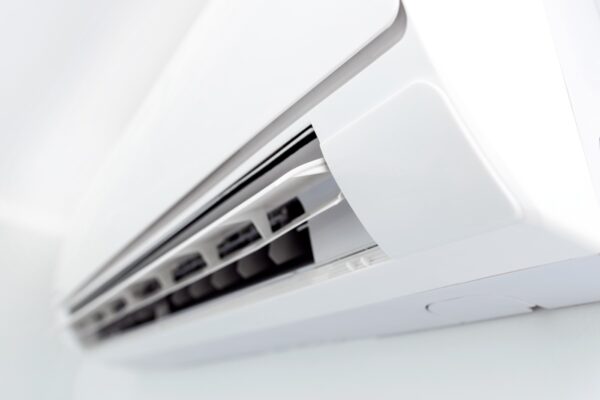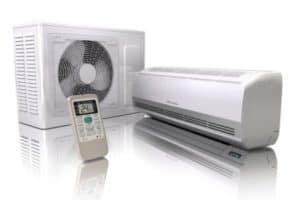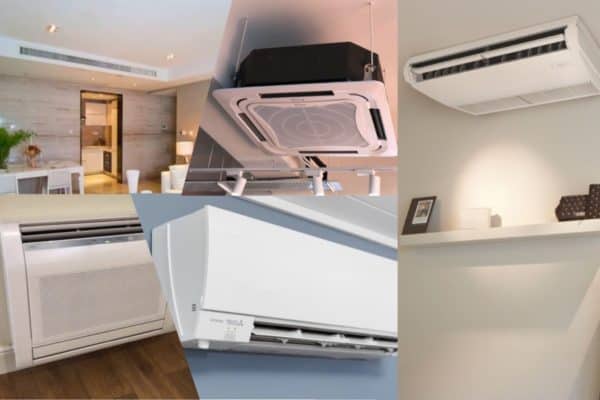Are Mini Splits Good for Garages? (Will They Work)
Mini splits are simple and highly energy efficiency. But, given their small sizes, there are concerns about whether mini splits are good for garages since garages are much hotter (and colder) than the rest of the house. So, I’ll share my thoughts and hopefully, it can help you make a decision.
Overall, mini splits are a good option for garages. Mini splits cool/heat relatively fast while consuming significantly less energy than other alternatives. However, mini splits have their limitations which in turn they may not be suitable for your garage.
Mini splits have many benefits. But, they also have caveats, limits and potential problems. Hence, there are still doubts when it comes to garage applications.
5 Reasons Why Mini Splits are Good for Garages
Some people may not be aware of all the benefits of using a mini split in the garage. Hence, it is always a good idea to revisit why mini splits are good for garages in the first place.
1. Cheap to Operate
To many people, the most attractive reason to install a mini split in the garage is the low operating cost.
Mini splits are highly energy efficient, meaning they use less power to deliver the same cooling/heating effect. It is most notable when compared to portable air conditioners.
For instance, a typical 12,000 BTU (SACC) portable air conditioner consumes about 1250-1350 W of power. Meanwhile, a low-end 12,000 BTU mini split consumes about 1000-1100 W of power. That’s about 20-25% difference.
Not to mention, a slightly more energy-efficient mini split (SEER more than 20) can easily save you about 50% of the energy cost every time you use it.
In addition, mini splits are also cheap to maintain. They don’t have complex maintenance procedures to follow. Just cleaning the built-in filter once a month or so will do.
If you’re curious to see what the real maintenance work looks like, check out my blog post Mini Split Maintenance Checklist. The PDF checklist is what you need to keep track of the maintenance work.
2. Easy to Install
Most of the time, homeowners view their garage as an additional room/space that they convert into a home gym, workshop or other purposes. Hence, they prefer a simple and faster way.
Nowadays, many mini splits come with a full DIY installation kit. You can save costs by installing it yourself.
Having an independent unit means you’re not restricted to specific locations.
In most cases, you just need to reserve the center wall space to hang the indoor unit and a well-ventilated place outside the garage to put the outdoor unit.
If you want to know what it takes to install a mini split, check out my blog post How to Install a Mini Split (10 Steps). I included a list of tools needed should you choose to do by yourself.
3. No Need Ductwork
One of the reasons why mini splits are considered when homeowners are looking for a cooling and heating solution in the garage is because they don’t want to deal with the complex ductwork.
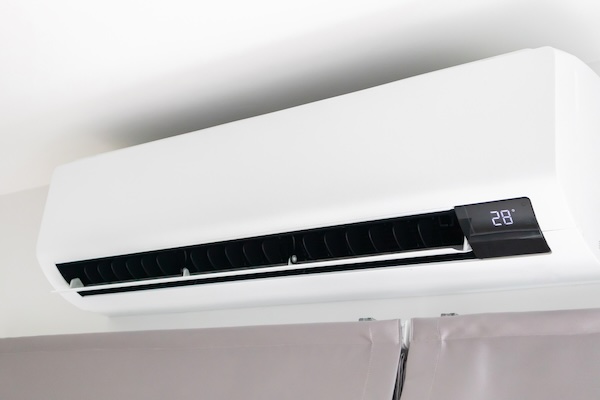
The best thing about using a mini split in the garage is you don’t have to think about whether your existing HVAC system has enough capacity and how to extend the existing duct to the garage.
Mini splits are known for their ability to be ductless. The wall-mounted type, floor-mounted type and ceiling cassette type are all viable choices for the garage and, they all don’t use ducts.
4. Zone Control
Another good reason to use a mini split in the garage has something to do with the overall energy usage and that is the ability to turn it off when not needed.
Mini splits always provide zone control which means you can have the garage at no cooling/heating (turn off) to save energy or set it at a different temperature than the rest of your house.
What this can achieve in practice is you’ll be more comfortable in the garage than in some other rooms in the house.
Sometimes, we get hot/cold spots in the house. With a mini split in the garage, you can set your preferred temperature every single time.
5. Air Filtration
While mini splits may not have the same filtration grade as a central air handler, some of them do provide decent air filtration (up to MERV13, see the full list here).
For example, the Panasonic Climapure XE and a few others have additional layers of air filters that can remove odor, pollutants and bacteria.
Even though mini splits are not a great air purifier, they still do better than other alternatives such as window air conditioners and portable air conditioners.
By the way, if you want to learn more about mini split especially how to design it for your house, consider my Mini Split (eBook). You’ll learn what is Mini Split, how to choose and more importantly, spark more design ideas to improve the energy efficient of your house. But, if you need a second opinion or want someone to help you design, then you can consider my consultation service.
Consultation Service
Ask me for HVAC advice such as brand selection, best model, benefits, features, placement, duct size, grille size, how to design, design check, verification and other HVAC related queries.
3 Reasons Why a Mini Split is NOT for Your Garage
Although there are many benefits of using a mini split in the garage, there may be times when a mini split is not suitable for your particular garage usage. Here are 3 reasons you may want to reconsider:
a) High Upfront Cost
Compared to window and portable air conditioners, mini splits are more expensive to install. The upfront cost can be significantly higher if you hire a professional for the installation.
The high upfront cost is one of the main reasons why many people back away from a mini split.
Depending on your location, a full system on average can cost you about $4,000 to install, including the system itself and the labor required according to a survey done by Forbes.
However, if you really want to capture the high energy efficiency offered by mini splits, you can install it by yourself just like many homeowners do.
In that case, the upfront cost is reduced to just around $1,000 to $1,500 which is the system itself and some installation accessories.
See some of the more budget mini split models sold on Amazon (below $650):
Naturally, I would recommend brands like Daikin and Mitsubishi but their upfront cost is higher (around $1,000) but if you’re on a tight budget, then the above are some of the options.
b) Not Integrated
Some homeowners like to have their HVAC systems all integrated. Hence, they prefer to extend their existing ductwork to serve the garage. If that’s what you thought, then mini splits may not be for you.
A fully integrated HVAC system means you can activate the cooling/heating system in your house with a single button.
If you plan to use the garage for 12-16 hours per day, then it makes sense to utilize your existing HVAC system given there is sufficient capacity.
People who are tech savvy may want to monitor the energy usage and performance of their HVAC system. Having 2-3 separate systems can make things more complicated.
Additionally, some people view a fully integrated HVAC system as something that will add value to the house while having a separate mini split system will not. If so, a mini split may not necessarily be good.
c) Take Up Space
Garages may not always have plenty of space. You may already struggle with space in your 1-car garage. If that’s the case, a mini split may not be viable for you.
In a workshop garage, the walls may be full of tools and cabinets. So, there is not much space left to hang an over 3 ft long mini split indoor unit. Though you can always find space for the mini split, some people may have the cabinet permanently mounted.
In this case, a mini split may not be suitable. Instead, a portable air conditioner or extending the existing ductwork to the garage may be a better choice.
Is a Mini Split a Good Idea for YOUR Garage?
So, after the above pros and cons comparison, it is a good idea to use a mini split in your garage? To answer this question, I believe you need to ask yourself the following questions:
Question 1 – How Often Do You Use the Garage?
If you use the garage very often (12-16 hours), then extending the existing ductwork and integrating it into your existing HVAC system may be a better choice.
First, you don’t have to deal with a new system. Second, it is easier to operate, monitor and maintain.
But, if you use the garage occasionally, then it doesn’t make sense to cool/heat the garage all the time with your central air conditioner. Instead, a separate mini split would be a better choice.
Question 2 – What is Your Budget?
If your existing HVAC system has spare capacity, then extending the ductwork to serve the garage is the cheapest option (usually below $1,000).
However, you may need to pay for a contractor to do a survey first or even do a load calculation to ensure there is enough capacity.
Often, to successfully cool/heat the garage, you must insulate the garage and that’ll increase the upfront cost significantly (about $2,000 to $3,000 depending on the garage size).
The other option is to use a mini split.
A DIY mini split may cost you around $1,000 to $1,500 depending on what size mini split you need and what tools you already have for the installation.
If you have an uninsulated garage and you’re not planning to insulate it, you may just need to use a bigger size mini split (e.g.: from 12,000 BTU to 18,000 BTU).
Still, the total cost could be cheaper than a duct extension if the site survey and load calculation are included.
Question 3 – When Do You Need It?
Another thing to consider is time. If you need an air conditioner or heater in your garage in a few days or within a week, then a mini split may be the way to go.
From research to purchase and installation, a mini split can get your garage ready in a week.
Whereas extending your existing ductwork may take 2-3 weeks depending on how many quotations you want to compare and how much modification work is needed.
Out of all, a portable air conditioner can get you instant cooling but in the long run, it’ll cost you more. So, a mini split may still be the answer.
Can Mini Splits Work with Extreme Temperatures?
One of the major concerns about getting a mini split for the garage is underperform. If the mini split is not selected correctly, it may not be able to address your cooling/heating and dehumidification needs.
Cooling Limits
Mini splits have a wide range of operating temperatures when it comes to cooling. Most of the time, a mini split can still work when the outdoor temperature rises to 115°F. They may be less efficient at these high temperatures but they continue to provide cooling.
However, mini splits are designed at an outdoor temperature of 95°F.
So, if the outdoor temperature in your area will exceed 95°F, then you should consider using a bigger size mini split.
Heating Limits
There are two types of mini splits when it comes to heating. The standard mini split can only work when the outdoor temperature is 5°F and above.
If the outdoor temperature in your area drops below 5°F (into the negative zone), then you must use a low-ambient mini split.
A typical low-ambient mini split can work at an outdoor temperature of -13°F.
For heating capacity, mini splits are designed based on an outdoor temperature of 47°F and 17°F. If the outdoor temperature in your area drops below that, then you need to use a bigger size mini split.
What Size Mini Split for Garage?
Using the correct size mini split is the most important thing to figure out when planning. Below is a range of mini split sizes corresponding to different garage sizes for reference:
| No. of Car | Garage Size | With Insulation | No Insulation |
|---|---|---|---|
| 1-Car Garage | 200-300 sqft | 9,000 – 12,000 BTU | 12,000 – 15,000 BTU |
| 2-Car Garage | 350-650 sqft | 12,000 – 18,000 BTU | 18,000 – 24,000 BTU |
| 3-Car Garage | 700-900 sqft | 18,000 – 24,000 BTU | 30,000 – 36,000 BTU |
Generally, we want to use about 20-30 BTU per square foot to size the mini split if the garage is well-insulated. If it is totally not insulated (wall, garage door and ceiling not insulated), then we need to use about 40-50 BTU per square foot.
The size of a mini split is usually capped at 24,000 BTU. So, if you need 36,000 BTU, then two 18k BTU units are required. Two units are also better at eliminating cold/hot spots in the garage.
However, two units are significantly more expensive. In that case, you may want to consider insulating at least the garage door to bring down the mini split size.
Lastly, if you want to see more about garage mini split sizing and the best mini split for the garage, check out my blog post 6 Best Mini Splits for Garage (up to 4-car, 1300 sqft).
Lastly, consider my Mini Split (eBook) if you want to know how can you use Mini Split in your house. If you still have doubt or not feeling confident enough, feel free to consult me.
Consultation Service
Ask me for HVAC advice such as brand selection, best model, benefits, features, placement, duct size, grille size, how to design, design check, verification and other HVAC related queries.
If you have anything to add (or ask) about this topic, leave a comment down below!


